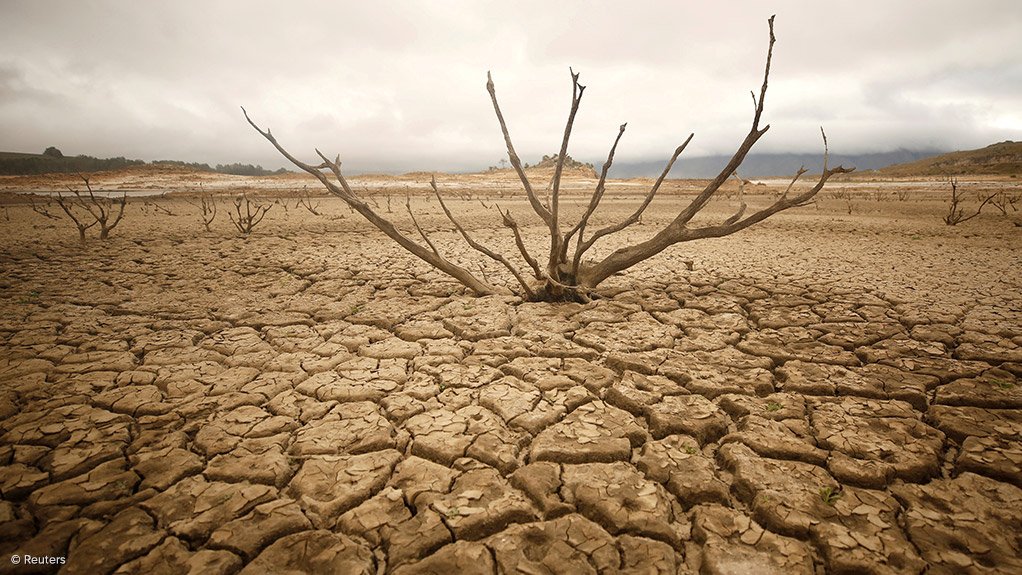Meteorologists say drought not an inevitable outcome of El Niño
Researchers in South Africa and around the globe have indicated that the regular monitoring of the El Niño-Southern Oscillation (Enso) system suggests a strong El Niño is currently developing.
However, climate experts have cautioned against assuming that drought is inevitable, as the latest rainfall forecast is for a favourable spring.
Speaking at the El Niño 2023 Summit hosted by the Extreme Climate Events Research Alliance (Ecera) at the University of Pretoria (UP) on June 19, UP meteorologist Professor Willem Landman noted that, while most extreme droughts over the Southern African Development Community happened during El Niño events, some drought predictions were over-confident.
This is the first such event after three years of a La Niña phase since the 2018/19 and 2015/16 El Niño events, which had a serious impact on South Africa, with significant droughts in various summer rainfall locations.
This comes amid reports of unprecedented global sea surface temperatures and continuously rising average atmospheric temperatures.
“Should the upcoming El Niño manifest as projected, we should expect that this will have a significant impact on the coming summer climate and weather in Southern Africa,” Alliance for Collaboration on Climate and Earth Systems Science director Dr Neville Sweijd said.
The summit was organised to share information with affected sectors, businesses, government departments and other stakeholders who seek to understand the basics of the climate predictions, to determine how the El Niño event may impact them.
Sweijd said the aim of the summit was to raise awareness of the pending climate anomaly and start the process of gathering information and information requirements in anticipation of its possible impact across the country.
El Niño is a climatic phenomenon characterised by warmer-than-average sea surface temperatures (SSTs) in the central and eastern tropical Pacific Ocean. It forms part of the larger climate pattern known as the Enso. El Niño events typically occur every few years, lasting for several months to a year or more.
The opposite phase of El Niño is known as La Niña, and is characterised by colder-than-average SSTs in the central and eastern tropical Pacific, with its own distinct impacts on global weather patterns. Together, El Niño and La Niña form the Enso cycle, influencing climate variability on a global scale.
During El Niño, the typical trade winds that blow from east to west weaken or even reverse, causing a decline in the upwelling of cold, nutrient-rich waters along the coast of South America. As a result, ocean surface temperatures rise, impacting on weather patterns and the climate worldwide.
The effects of El Niño can be widespread and varied, depending on the intensity of the event. Changes in rainfall patterns are a common outcome, which can lead to drought conditions in normally wet areas, while simultaneously increasing rainfall in usually dry regions, which can lead to flooding.
The impact that El Niño events can have on agricultural productivity is significant, Sweijd said, owing to changes in rainfall and temperature patterns. It can lead to crop failures, reduced yields and economic losses in affected areas.
Unusual temperatures are also often recorded, with heatwaves generally being a trend that is associated with El Niño events.
“We can see that, in 2015/16, the impacts of El Niño events can be really severe. So we have to take cognisance of what could happen without knowing precisely what will happen. The strength of the El Niño doesn’t always predict how severe the impacts will be,” Sweijd said.
The most recent extreme El Niño events that had a significant impact on South Africa occurred in 2018/19 and 2015/16, the latter of which was one of the strongest El Niño events on record.
The El Niño-induced drought in South Africa during these periods was among of the worst in decades. Many regions experienced significantly reduced rainfall, leading to water shortages, agricultural losses and negative impacts on livestock and wildlife. As a result, several provinces declared a state of disaster.
The drought led to crop failures and reduced agricultural production, particularly in the maize-growing regions. This decrease in production negatively affected the country’s food security and prices.
The prolonged drought resulted in depleted water reservoirs, reduced dam levels, and water restrictions in many areas.
Wildfires also broke out around the country owing to the dry conditions.
These recent extreme El Niño events highlighted the vulnerability of South Africa to climate variability and underscored the importance of preparedness and adaptation measures to mitigate the impacts of such events in the future, Sweijd noted.
So far, the drought extent in South Africa is expected to be limited and largely confined to the Cape provinces – particularly in regions closer to the coast rather than in the interior, according to meteorologist Dr Johan Malherbe.
He said very little to no expansion of drought areas has been noted across the country. However, recent months have been drier over the northern parts of the summer rainfall region, with drought appearing at shorter time scales over the northwestern parts of South Africa.
He said large parts of the central to southeastern interior still experience extremely wet conditions at longer scales, according to the standard precipitation index (SPI).
Speaking at the summit, Agricultural Research Council Natural Resources and Engineering meteorologist Mokhele E Moeletsi noted that drought occurrence still remains very limited following two wet summers and wet conditions during most of the current summer across South Africa. This is despite dry conditions experienced during January, March and April over much of the northern parts of the country.
“Severe to extreme drought at the medium to long-range timescale is limited to small pockets over the southern parts of the Eastern Cape and in the vicinity of the Richtersveld in the northwestern Northern Cape,” he said.
Moeletsi noted that a northwest-southeast stretching band across the central parts of the country remains extremely wet with a high SPI at medium- to long-term timescales, with high cumulative vegetation on average. Relatively wet conditions over much of the country since early this summer have resulted in above-average cumulative vegetation growth in general.
He said that, so far, conditions are closer to normal to the northeast and to the southwest of the extensive wet band over the interior.
Owing to widespread above-normal rain also over the winter rainfall region since December, the drought extent and intensity have diminished relative to the situation experienced earlier.
“At a short-term timescale, the winter rainfall region is experiencing extremely wet conditions according to the SPI and vegetation activity is significantly above the mean. At long time scales, drought extent and intensity also diminished over this region,” he said.
He said there would be a follow-up briefing as more is learned closer to the summer rainfall season. Ecera will invite experts to present information and facilitate discussion.
Depending on how the predicted El Niño will develop, there may be a need for additional sessions, Moeletsi said.
Article Enquiry
Email Article
Save Article
Feedback
To advertise email advertising@creamermedia.co.za or click here
Comments
Press Office
Announcements
What's On
Subscribe to improve your user experience...
Option 1 (equivalent of R125 a month):
Receive a weekly copy of Creamer Media's Engineering News & Mining Weekly magazine
(print copy for those in South Africa and e-magazine for those outside of South Africa)
Receive daily email newsletters
Access to full search results
Access archive of magazine back copies
Access to Projects in Progress
Access to ONE Research Report of your choice in PDF format
Option 2 (equivalent of R375 a month):
All benefits from Option 1
PLUS
Access to Creamer Media's Research Channel Africa for ALL Research Reports, in PDF format, on various industrial and mining sectors
including Electricity; Water; Energy Transition; Hydrogen; Roads, Rail and Ports; Coal; Gold; Platinum; Battery Metals; etc.
Already a subscriber?
Forgotten your password?
Receive weekly copy of Creamer Media's Engineering News & Mining Weekly magazine (print copy for those in South Africa and e-magazine for those outside of South Africa)
➕
Recieve daily email newsletters
➕
Access to full search results
➕
Access archive of magazine back copies
➕
Access to Projects in Progress
➕
Access to ONE Research Report of your choice in PDF format
RESEARCH CHANNEL AFRICA
R4500 (equivalent of R375 a month)
SUBSCRIBEAll benefits from Option 1
➕
Access to Creamer Media's Research Channel Africa for ALL Research Reports on various industrial and mining sectors, in PDF format, including on:
Electricity
➕
Water
➕
Energy Transition
➕
Hydrogen
➕
Roads, Rail and Ports
➕
Coal
➕
Gold
➕
Platinum
➕
Battery Metals
➕
etc.
Receive all benefits from Option 1 or Option 2 delivered to numerous people at your company
➕
Multiple User names and Passwords for simultaneous log-ins
➕
Intranet integration access to all in your organisation



















